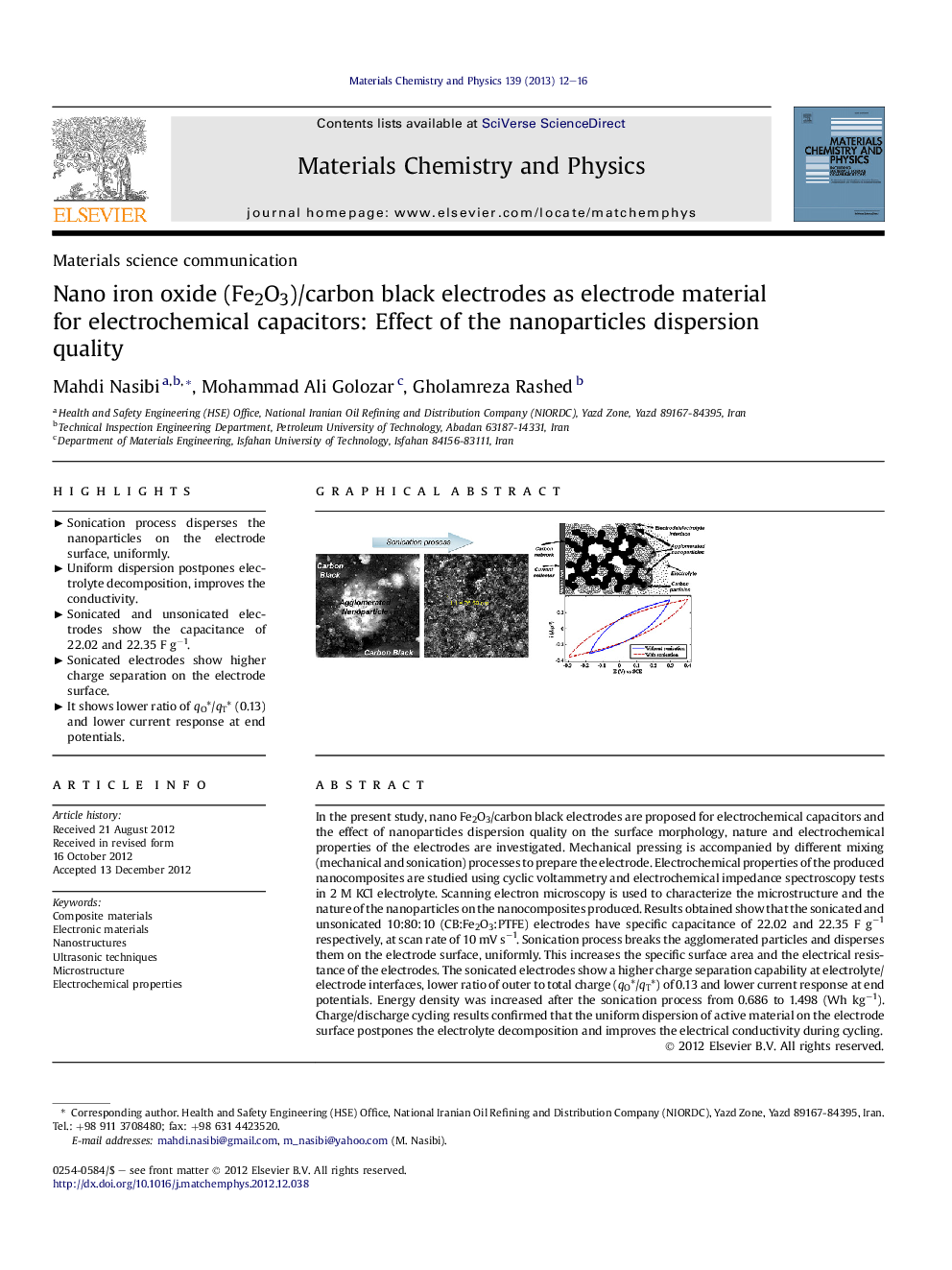| Article ID | Journal | Published Year | Pages | File Type |
|---|---|---|---|---|
| 1523355 | Materials Chemistry and Physics | 2013 | 5 Pages |
In the present study, nano Fe2O3/carbon black electrodes are proposed for electrochemical capacitors and the effect of nanoparticles dispersion quality on the surface morphology, nature and electrochemical properties of the electrodes are investigated. Mechanical pressing is accompanied by different mixing (mechanical and sonication) processes to prepare the electrode. Electrochemical properties of the produced nanocomposites are studied using cyclic voltammetry and electrochemical impedance spectroscopy tests in 2 M KCl electrolyte. Scanning electron microscopy is used to characterize the microstructure and the nature of the nanoparticles on the nanocomposites produced. Results obtained show that the sonicated and unsonicated 10:80:10 (CB:Fe2O3:PTFE) electrodes have specific capacitance of 22.02 and 22.35 F g−1 respectively, at scan rate of 10 mV s−1. Sonication process breaks the agglomerated particles and disperses them on the electrode surface, uniformly. This increases the specific surface area and the electrical resistance of the electrodes. The sonicated electrodes show a higher charge separation capability at electrolyte/electrode interfaces, lower ratio of outer to total charge (qO*/qT*) of 0.13 and lower current response at end potentials. Energy density was increased after the sonication process from 0.686 to 1.498 (Wh kg−1). Charge/discharge cycling results confirmed that the uniform dispersion of active material on the electrode surface postpones the electrolyte decomposition and improves the electrical conductivity during cycling.
Graphical abstractFigure optionsDownload full-size imageDownload as PowerPoint slideHighlights► Sonication process disperses the nanoparticles on the electrode surface, uniformly. ► Uniform dispersion postpones electrolyte decomposition, improves the conductivity. ► Sonicated and unsonicated electrodes show the capacitance of 22.02 and 22.35 F g−1. ► Sonicated electrodes show higher charge separation on the electrode surface. ► It shows lower ratio of qO*/qT* (0.13) and lower current response at end potentials.
